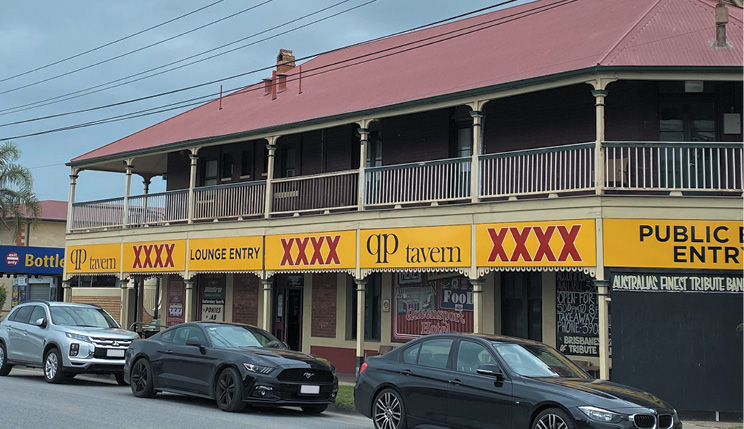By Jill Greenhill, Librarian, Wynnum Manly Historical Society
In the Brisbane Courier of 5 May 1891 Martin Kavanagh was advertising “a new hotel for Hemmant”.
Martin Kavanagh was already well established in the district. He had purchased seven acres of land in Doughboy Creek (Hemmant) in 1867 and was then advertised as a “farmer”. The government-owned land, originally occupied by the Gnaloongpin people, was gradually sold off in the 1840s and 1850s to private landholders. The land was cleared, and the Aboriginals displaced. Farms were established, with fruit and vegetables transported by boat up-river into town. The bridging of Doughboy (Bulimba) Creek in 1861 further opened up the area. The small villages of Doughboy Creek (renamed Hemmant in the 1870’s) and Lytton developed.
Martin changed his occupation to “Publican” and was the publican of the Lytton Hotel from 1879 to 1891. During those years, Hemmant acquired a school, a postmaster, a policeman, three dairymen, 26 farmers, a butcher, and a baker. The Queensport meat works was established in the 1880s close by on the riverbank. The railway line to Cleveland passed through Hemmant in 1889 and a permanent station was in place by 1914.
One of Brisbane’s first amusement parks was built in 1889, at the end of today’s Aquarium Avenue, beside the river. Day trippers boarded steam boats in the City to be brought to the “Queensport Aquarium”. Within the park were six large glass fish tanks, a penguin enclosure, performing seals, tame pelicans, a dance hall, a switch-back railway and a merry-go-round. A zoo, with monkeys, tigers, snakes, cheetahs and panthers, was also an attraction. Unfortunately, as a result of the 1893 floods and poor financial management, the park closed in 1897.
Martin realised the potential of establishing a hotel at Hemmant and announced his intention in the Brisbane press. He was granted a hotel license in 1891 and built the hotel on his land, near the Queensport Aquarium, as well as close to the Queensport meat works, ensuring that he had a steady clientele for the hotel.
The new Queensport Hotel was designed by respected Brisbane architect, Charles McLay, who had worked for the Queensland Government from 1885. In 1890 Charles McLay moved into private practice and the Queensport Hotel was one of his first assignments. The building was of brick and timber construction.
When Martin opened the Queensport Hotel in May 1891, the license for the Lytton Hotel was transferred to his daughter, Bridget Kavanagh. Martin died in 1898 and passed the license for the Queensport Hotel over to another of his daughters, Mary Ann Kavanagh.
Mary Ann Kavanagh married Martin McGladrigan and the hotel was run by the Kavanagh family until 1911. Then the lease passed to John Henry Campbell and thus followed a series of licensees for the hotel.
Many of Brisbane’s small villages established around the mouth of the river in the nineteenth century have disappeared – Lytton, Cribb Island and Myrtletown – due to infrastructure and industrial expansion. Pinkenba and Hemmant remain today.
The Queensport Hotel is the last nineteenth-century hotel remaining and continues to provide hospitality to industry workers and the local community.
The Queensport Hotel is located at 49 Gosport Street, Hemmant.




